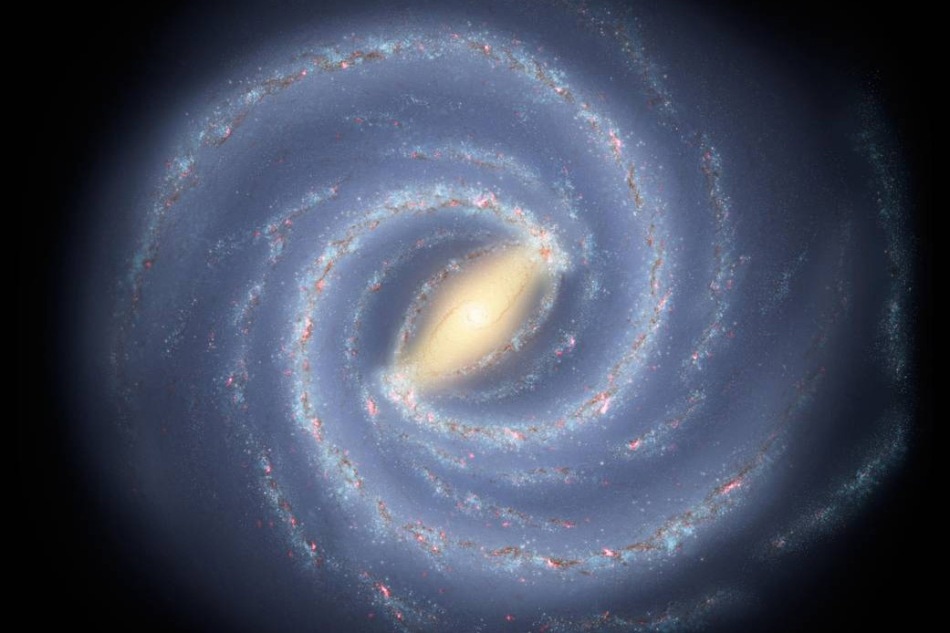Jun 13 2019
A study led by Sukanya Chakrabarti, Assistant Professor at Rochester Institute of Technology, has found that the collision of Antlia 2—a newly discovered dark dwarf galaxy—with the Milky Way could be the reason for the characteristic ripples in the outer disk of Milky Way.
 A group of scientists led by RIT Assistant Professor Sukanya Chakrabarti believes that the dark dwarf galaxy Antlia 2’s collision with the Milky Way hundreds of millions of years ago is responsible for our galaxy’s characteristic ripples in its outer disk. (Image credit: Rochester Institute of Technology)
A group of scientists led by RIT Assistant Professor Sukanya Chakrabarti believes that the dark dwarf galaxy Antlia 2’s collision with the Milky Way hundreds of millions of years ago is responsible for our galaxy’s characteristic ripples in its outer disk. (Image credit: Rochester Institute of Technology)
The Antlia 2 dwarf galaxy was found out using the second data launch of the European Space Agency’s Gaia mission, which intends to plot a 3D map of the Milky Way galaxy. The current location of Antlia 2 closely matches with the location of a dwarf galaxy dominated by dark matter, which was proposed by Chakrabarti in 2009 through a dynamical analysis. Chakrabarti used the Gaia data to calculate its previous trajectory and discovered that Antlia 2 would have collided with the Milky Way and created large ripples that can be observed in the outer gas disk of the Milky Way.
Forthcoming additional data launches from Gaia will offer more clarity, and Chakrabarti stated that she and her colleagues have made “a hand-on-the-cutting-board kind of prediction of what to expect for the motion of the stars in the Antlia 2 dwarf galaxy in future Gaia data releases.” According to her, the discovery could enable devising techniques to search for dark galaxies and eventually solve the persistent puzzle of what constitutes dark matter.
We don’t understand what the nature of the dark matter particle is, but if you believe you know how much dark matter there is, then what’s left undetermined is the variation of density with radius. If Antlia 2 is the dwarf galaxy we predicted, you know what its orbit had to be. You know it had to come close to the galactic disc. That sets stringent constraints, therefore, on not just on the mass, but also its density profile. That means that ultimately you could use Antlia 2 as a unique laboratory to learn about the nature of dark matter.
Sukanya Chakrabarti, Assistant Professor, Rochester Institute of Technology
The scientists also investigated other possible reasons for the ripples in the outer disk of Milky Way, but excluded other candidates. The tidal strength of the Sagittarius dwarf galaxy was inadequate and the Large and Small Magellanic Clouds are very far away. The proof indicates Antlia 2 as the most probable cause.
Chakrabarti presented the study outcomes at the 234th meeting of the American Astronomical Society in St. Louis, Mo., on Wednesday, June 12th, 2019.
Chakrabarti’s study is supported by NASA ATP NNX17AK90G and NSF AAG grant 1517488. Philip Chang, associate professor at the University of Wisconsin-Milkwaukee; Adrian Price-Whelan, postdoctoral fellow at Princeton University; Justin Read, professor at University of Surrey; Leo Blitz, professor at University of California Berkeley; and Lars Hernquist, professor at Harvard University are other researchers contributing to the research.